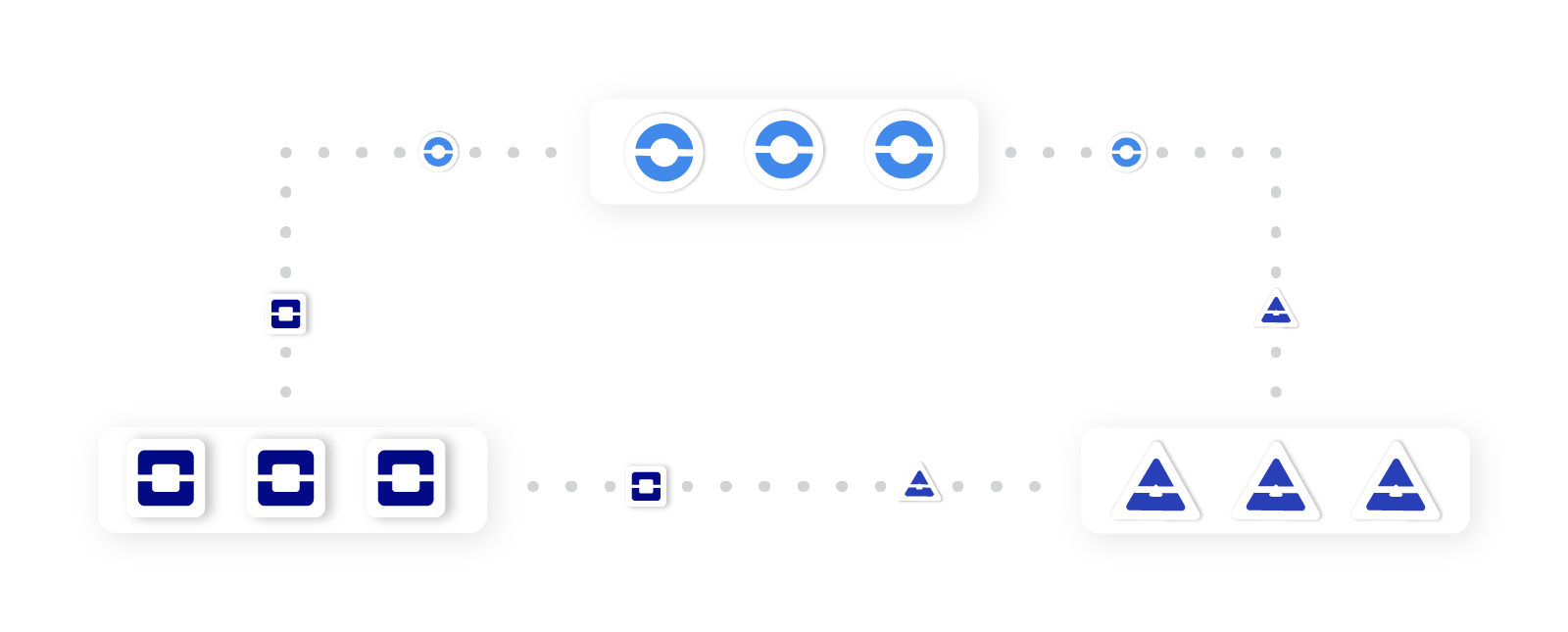Data is critical for making informed decisions and gaining a competitive advantage.
However, many companies struggle to utilize data from various sources due to data silos effectively. Data silos can be a significant pain point for organizations that want to harness the power of data for better decision-making and more streamlined operations. But what are they exactly, and why do they form?
This article will explore the causes of data silos and their impact on an organization’s bottom line.
We will also discuss actionable strategies for breaking down data silos, from implementing effective data governance practices to building meaningful data relationships.
Plus, we will dive into the risks of transferring data from one platform to another and provide tips for managing them. Let’s get into it.
Why Is My Data Siloed?
Data silos are isolated systems or databases that do not readily share information with other parts of an organization. They are data repositories that are typically hard to access and integrate with existing systems.
Data silos are usually associated with enterprise companies as they are often large and complex organizations requiring data sharing between multiple departments, locations, and systems. The way their data is stored can be inefficient, making it difficult to access and convert into usable intelligence.
Data silos can arise for several reasons: departmentalization, inability to reconcile legacy systems, data security concerns, inadequate data governance practices, and mergers or acquisitions. While some of the associated issues may appear outwardly insignificant, they can lead to severe complications when left unchecked.
The Impact of Departmentalization on Data Silos
Departmentalization happens when each team manages its data independently, creating a lack of consistency across the enterprise. This issue occurs because of no central authority over the data and decision-making and poor interdepartmental communication.
With siloed information scattered throughout departments and different systems unable to talk to one another—even within the same organization—it becomes complicated to leverage the insights in consolidated enterprise data.
Legacy Systems and Their Role in Creating Data Silos
Legacy systems are another major factor in data silos. Organizations grappling with outdated technology struggle with disparate technologies not designed for integration, making it difficult for users to access current and comprehensive intelligence from one place.
In addition, high system complexities demand resources for maintenance and upkeep that can strain budgets without delivering value.
Data Security Concerns Contributing to Siloed Data
Data security concerns are another critical reason organizations may opt for segregation rather than consolidation when managing sensitive information like customer records. This reluctance to unify often results in silos. Users can only access narrow slices of a company’s overall dataset, severely curtailing their visibility into market trends or opportunities.
The Importance of Effective Data Governance in Preventing Data Silos
Addressing these obstacles requires an organization-wide coordinated effort toward effective data governance initiatives rooted in solid leadership that establishes rules for collecting and managing information across business units.
Without this control over organizational data, disparate sources will remain disconnected, creating separate “pools” that can impede agile business decisions and long-term growth objectives.
How Do I Develop Data Relationships?
Organizations gain new insights and improve automation capabilities with related data. A data relationship is a connection or association between two or more sets of data. It refers to the way data elements are related to each other in a database or other data storage system.
In a relational database, for example, data relationships are established by defining tables with primary keys and foreign keys that link to other tables. The relationships between these tables can be one-to-one, one-to-many, or many-to-many, depending on the nature of the data.
Consider a customer relationship management system (CRM) connected to e-commerce platforms. It links customers’ purchase histories, surveys, and more. This holistic connection between different customer data points helps companies to build automated customer journeys that lead to higher conversions and better outcomes.
Planning for Meaningful Data Connections
To develop these connections, organizations should develop a plan to ensure their data relationships are logical and meaningful to the business. That includes considering how different variables interact within an organization’s data ecosystem and understanding them holistically.
Once meaningfully linked, organizations can begin making decisions based on the associated datasets.
Leveraging Data Relationships for Insights and Decision-Making
Furthermore, by leveraging data relationships effectively, organizations can recognize hidden patterns and learn fortuitous correlations between different aspects of their industry or audience, such as customer behavior patterns or purchasing trends. That provides tremendous insight into market movements and changes around them, which can inform marketing strategies or other critical decisions.
The Role of Data Relationships in Forecasting and Cost Savings
As such, developing meaningful data relationships plays a pivotal role in successful organizations today as it allows them to quickly gain insights from disparate sources and make better-informed decisions rooted in evidence-based analysis. These connections aid in accurate forecasting while potentially unlocking cost savings related to identifying efficiencies in existing operations and practices within an organization’s business processes.
How Do I Manage the Risks?
Data governance is crucial whenever data is transferred from one platform to another. Controls and permissions are among the most critical measures for governing data. Before transferring data or integrating applications, you should set up proper access controls to limit who has access to the information. Also, give appropriate permissions to users regarding the kind of actions performed with the data (e.g., read-only access). Through these controls and permission protocols, only authorized users will have access to confidential information.
Ensuring Data Security with End-to-End Encryption
End-to-end encryption systems are critical when transferring sensitive data between different platforms. Through such methods, incoming and outgoing data transmissions can be protected from unwarranted interception or monitoring by malicious actors. Data protection must remain paramount during transfers between digital platforms, so robust encryption protocols are essential for security purposes.
Establishing Post-Transmission Control Systems
Apart from encryption measures, setting up post-transmission control systems is crucial in safeguarding data during inter-platform transfers. Any incoming or outgoing files must undergo a rigorous review process to identify all kinds of threats (virus software, malware, etc.) early on before they can damage the system or gain unauthorized access to confidential information.
Conducting Regular Maintenance Checks for Data Security
Finally, conducting regular maintenance checks on all systems connected within an organization’s network can protect against potential threats, such as new spyware infiltration and other cybersecurity vulnerabilities. You should not take these checks lightly, as they guarantee smooth transfers while handling confidential or sensitive information between digital platforms.
Is There a Fast Way To Do It?
As data plays an increasingly important role in business decision-making, new data platforms are emerging to help enterprises better manage their data. One such platform is ETL (Extract, Transform, Load), which integrates data from multiple sources and transforms it into a format usable by business intelligence and analytics tools.
Due to the ever-growing need for effective data management, enterprises often decide whether to develop custom software or integrations or implement a prebuilt solution like ETL. While custom solutions have certain advantages in terms of customization options, there are several compelling reasons why enterprises should consider using a prebuilt solution like ETL.
Cost-Effectiveness of Prebuilt Data Solutions
Firstly, prebuilt solutions are typically more cost-effective than custom development projects because the cost of development and testing spreads over multiple clients. That lowers the overall cost, making them more affordable than bespoke software or integrations that require high setup costs and long-term maintenance.
Speed and Ease of Setup With Prebuilt Platforms
Additionally, prebuilt solutions are quicker and easier to set up because they go through rigorous testing, automatically roll out bug fixes and security updates, and offer complete technical support from their developers if necessary. Moreover, since these platforms generally come with built-in scalability features that allow organizations to grow with their users’ needs over time, enterprises can continue to benefit from them even as their businesses evolve and expand.
Reducing Errors and Improving Efficiency
Last, using prebuilt solutions reduces the number of errors associated with manually building elements such as SQL code or manual workflows. That allows for greater efficiency when developing integration points between disparate systems.
The Value of ETL Platforms for Data Management
Ultimately, ETL provides an efficient way for organizations to quickly scale their Big Data capabilities while saving costs associated with high custom build-outs of applications. An ETL platform can be invaluable for enterprise executives regarding time saved, overall cost efficiency, and data utilization.
Data silos can be a significant roadblock for organizations leveraging data to drive better decision-making and improve operational efficiency. However, with the right strategies in place, such as developing meaningful data relationships, effective data governance, and risk management, companies can break down these barriers and unlock the full potential of their data.
By taking proactive steps to avoid data silos through software innovations, organizations can enhance their bottom line and stay ahead of the curve in this increasingly data-driven world.
At Kizen, we are here to help you transition into a data-forward business with an industry-tailored data platform. We have the expertise to organize and activate your data without disrupting your current operations, plus the resources to safely and seamlessly integrate with your existing software applications. Connect with us on our website, and we’ll schedule a time to chat.











